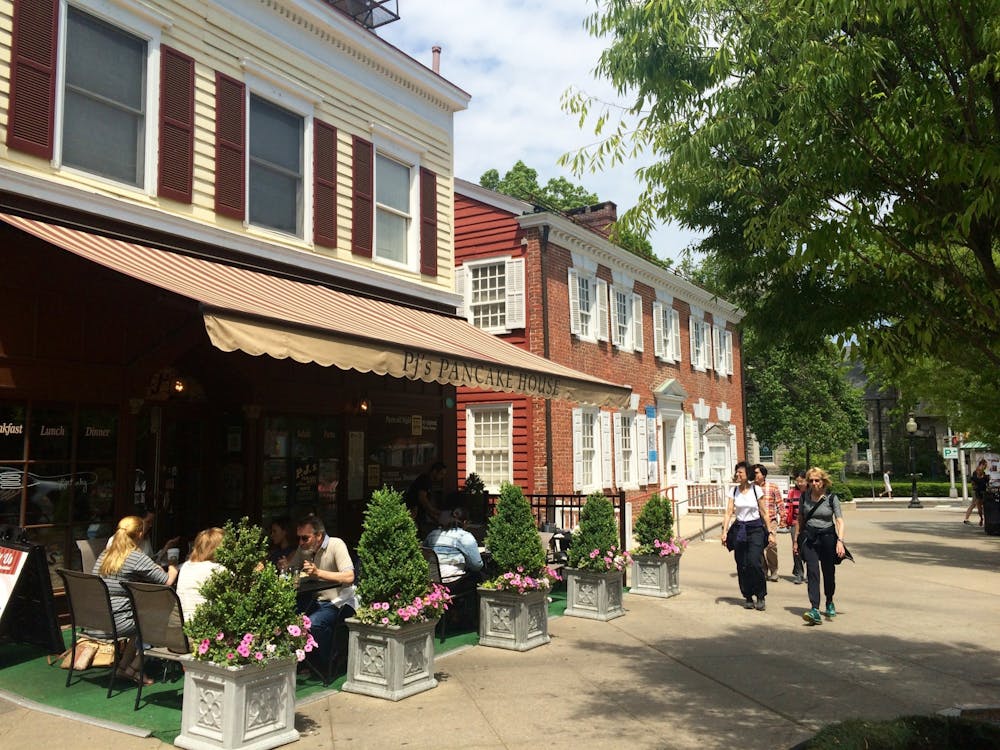The most powerful word in the title of the latest exhibit at the Princeton University Art Museum, "The Artist as Image," is that small, unassuming "as" nestled in the middle. Usually, we think of the artist as one who creates images, not embodies them. And yet, as the museum's new show reminds us, the artist is a common and appealing subject for art, causing the artist to become the image itself, conflating the creator and the created.
"The Artist as Image" presents 17 European and American works, dating from 1796 to 2004, which wrestle with the question of what it means to be an "artist." In the wall text for the show, art and archaeology professor Bridget Alsdorf explains that the works on display specifically relate to the "myth of the artist as solidified in the 19th century: a rebellious, temperamental and uniquely privileged social being." This image of the artist, the show insists, is indeed a "myth" that is created - not merely depicted - in self-portraits and in portrayals of artists by other artists.
A self-portrait claims to be a work of introspection, offering a privileged view into the artist's life. Yet a work like Jean-Jacques de Boisseau's 1796 etching "Self-Portrait" is fundamentally performative, as the artist presents himself holding a painting of a country scene, looking forward at the viewer but gesturing at his own work. Boisseau's subject is not Boisseau himself, but Boisseau's idea of what an artist should be: a cultured, cultivated man, in a dramatic hat and dark clothing, displaying his creation as his treasure.
Boisseau's "Self-Portrait" appears in "The Artist as Image" on one of two adjoining walls, which together form a loose left-to-right chronology of works on paper (mostly etchings and drawings) from the 1790s to the mid-20th century. This quasi-timeline includes an impressive array, for such a small show, of works by the likes of Edvard Munch, Marc Chagall and Pablo Picasso.
A particularly intriguing image in this set is a page taken from Paul Cezanne's sketchbook between 1875 and 1878. The sheet is filled with figure sketches in graphite, including studies of nude bathers, with a drawn self-portrait thrown in the mix. The compositions on the page overlap so that part of the artist's face is covered with lines from a scene of nudes. Cezanne's constructed identity as an artist and the artworks he produces literally touch each other.
Sadly, Cezanne's work seems crowded in the corner of the exhibit space, especially since the viewer, following the narrative logic of the hang, has encountered an entire wall of monochrome works on paper before reaching it. The crowding effect is the most palpable downside to the exhibit, which, on its two chronologically arranged walls, fails to produce a visual rhythm, either in size or in color palette of works, to break up the viewing experience.
The two other walls of the exhibit, fortunately, are far more successful in creating interesting juxtapositions. Especially intriguing is the side-by-side view of Andy Warhol's "Triple Rauschenberg," a 1962 blue-toned screenprint of a photograph of Robert Rauschenberg, and Rauschenberg's own "Booster," a large-scale lithograph/screenprint from 1967. "Booster" seems to provide a direct response to "Triple Rauschenberg" by presenting a succession of X-rays of Rauschenberg's body at the center of its composition. Rauschenberg interrogates both Warhol's depiction of him and his own self-portraiture by making it clear that the series of X-rays is fragmented, pieced together from head to toe. He literalizes the process of identity "construction" in the life of the artist by physically assembling a self-portrait from purportedly objective, scientific images.
If the Warhol/Rauschenberg juxtaposition successfully permits the two works to shed light on each other, the final wall of the exhibit, which presents works by Kiki Smith and Glenn Ligon, fails at the same endeavor. The wall text says their works "introduce issues of gender and race," but the precise tenor in which these matters are addressed is unclear, especially in Smith's untitled 1990 lithograph, a swirling abstraction in black-on-white. The wall text and the juxtaposition of Smith's work with the 2004 self-portrait of Ligon (a black male) are apparently supposed to identify Smith's lithograph as a self-portrait dealing with race and/or gender. Smith's abstract work, however, still begs for further explanation of its association with portraiture.

While Smith's work could benefit from a didactic wall label, the lack of such labels in the remainder of the show is actually one of its strengths, as it places the responsibility of formulating judgments on the visitor. The one guideline that the viewer needs is already there in the exhibit's title: Remember, what you think is an artist is actually an image.
4 Stars
Pros: Uses portraits of artists as an intriguing opportunity to study identity construction and the relationship of the artists to their work.
Cons: Largely monotonous and crowded display style; insufficient context for a few works because of lack of wall labels.








